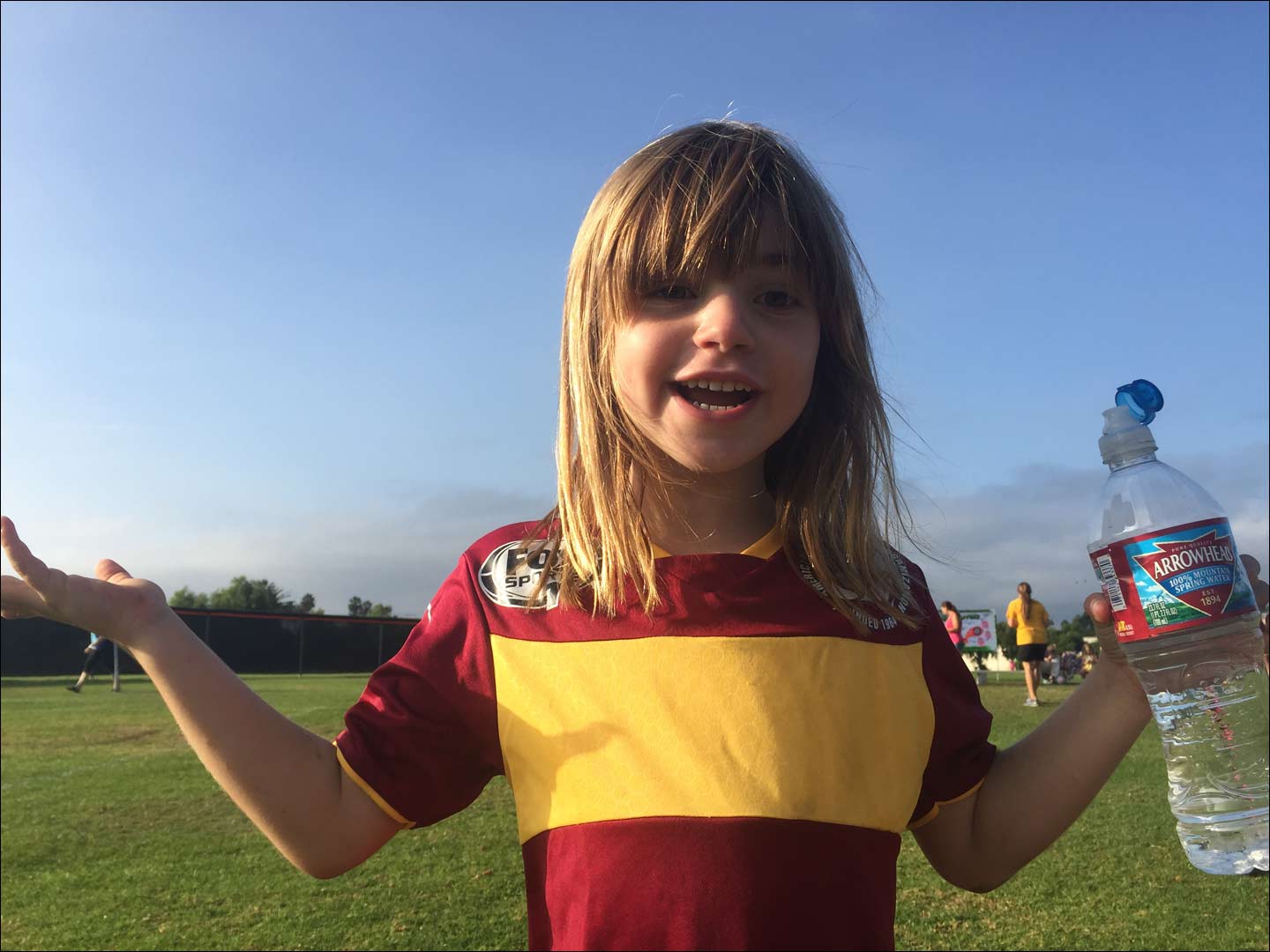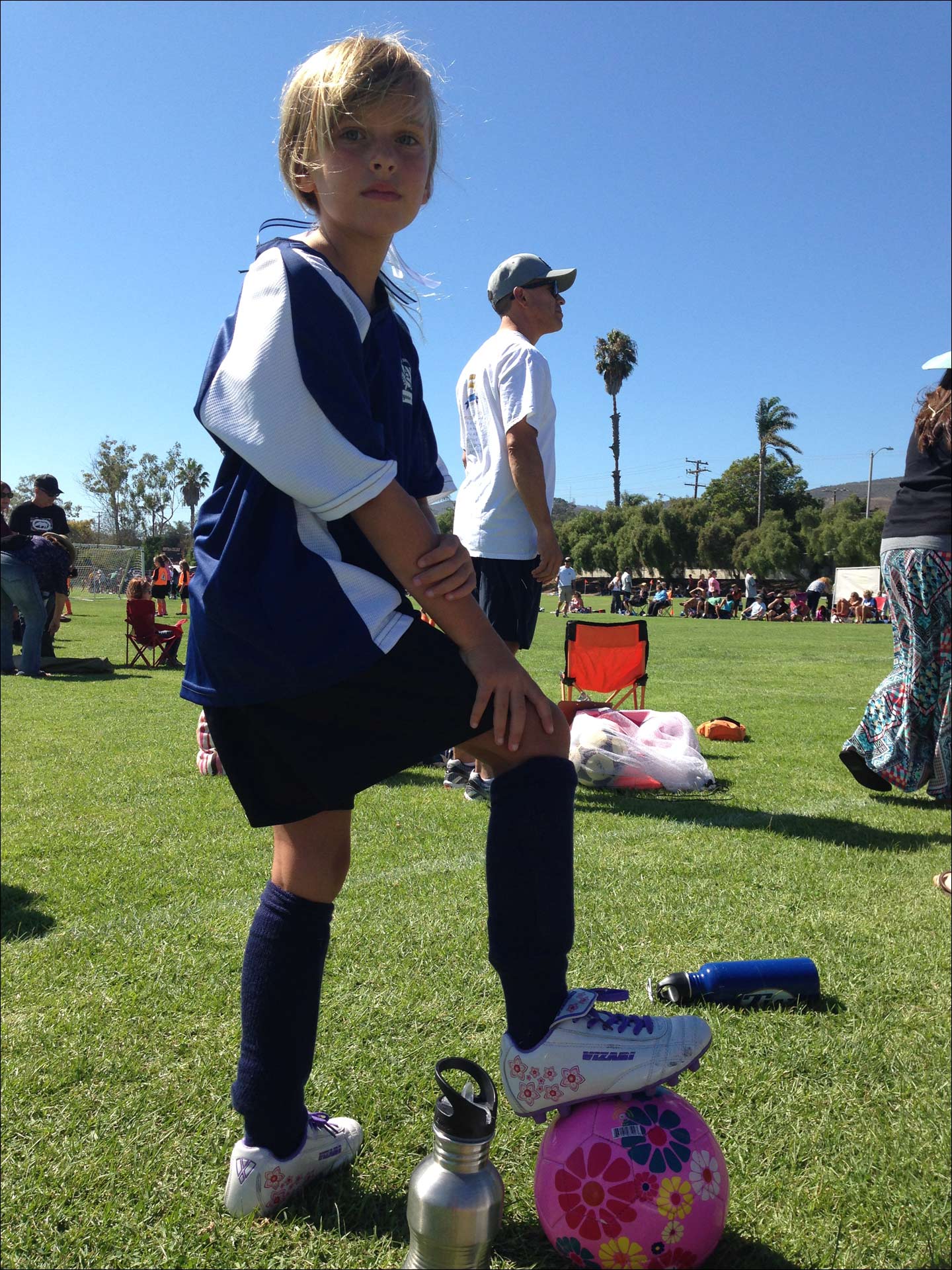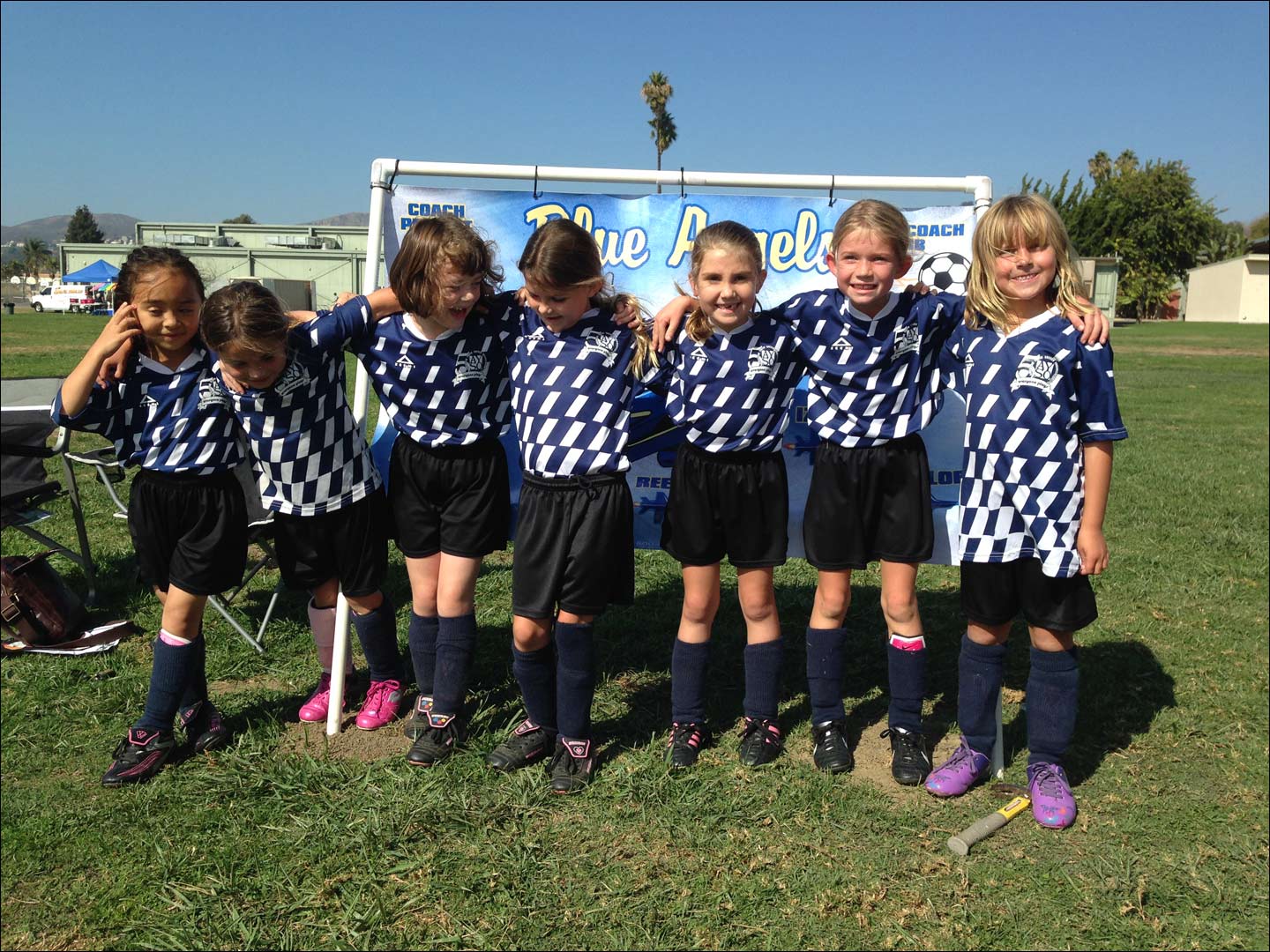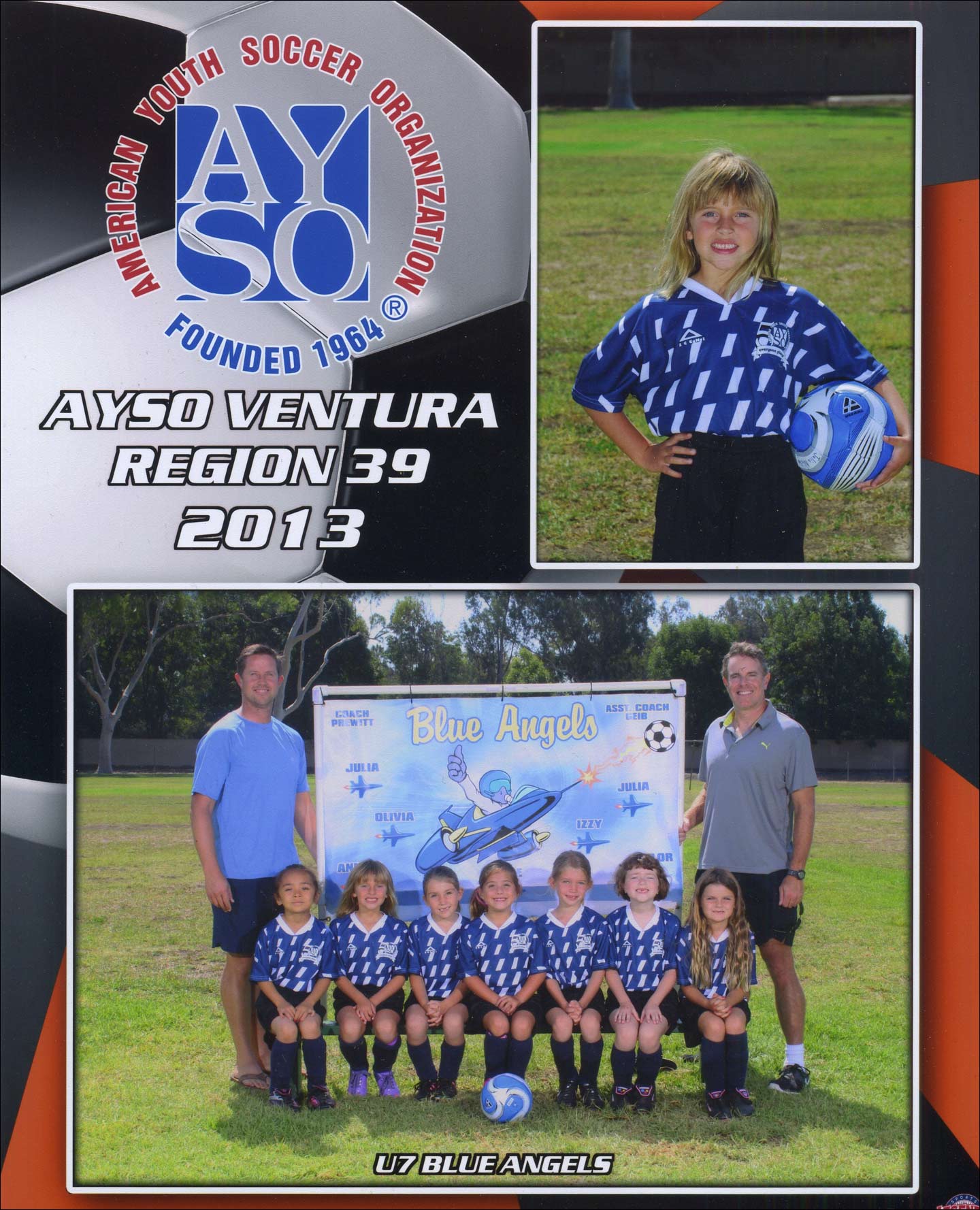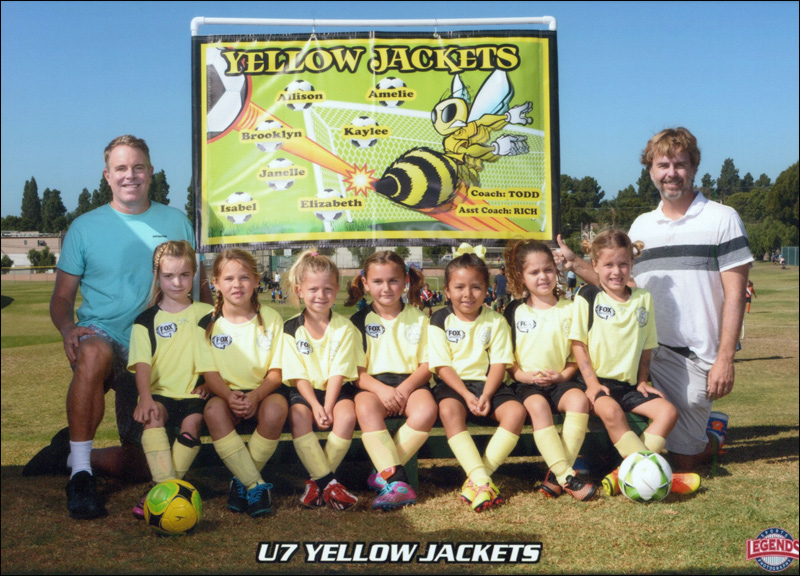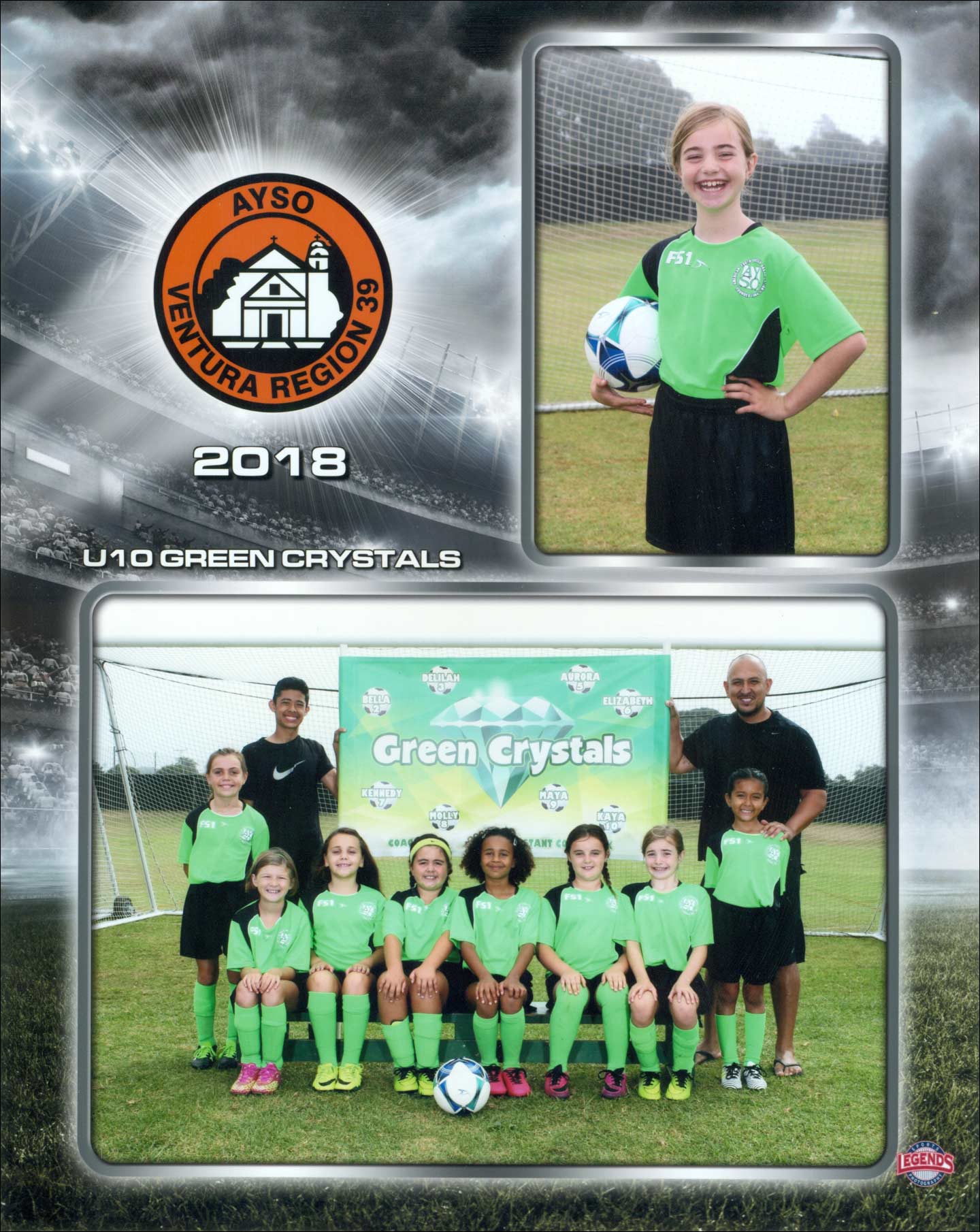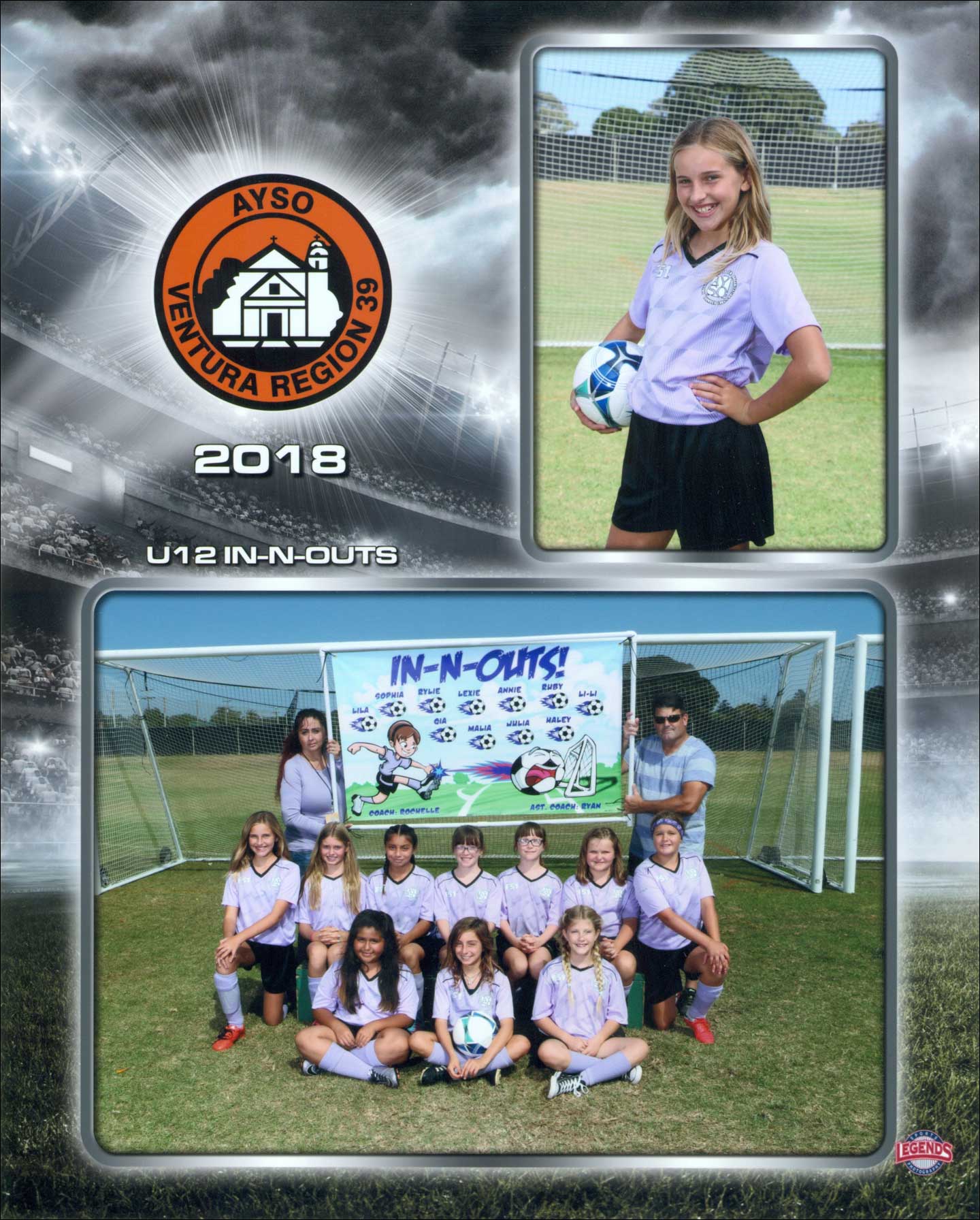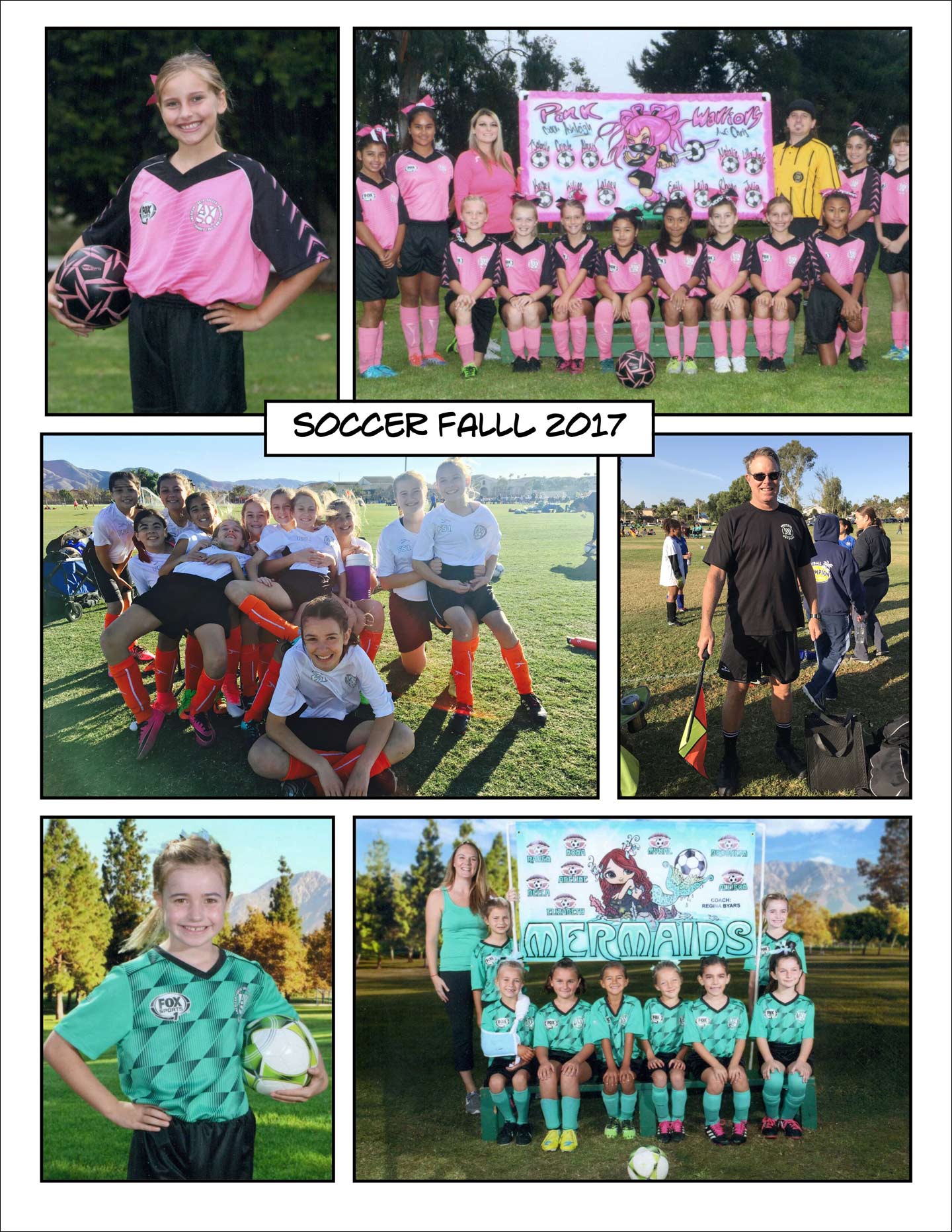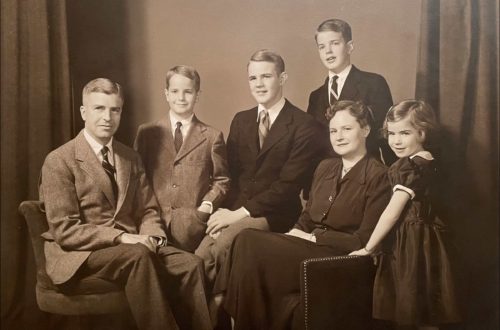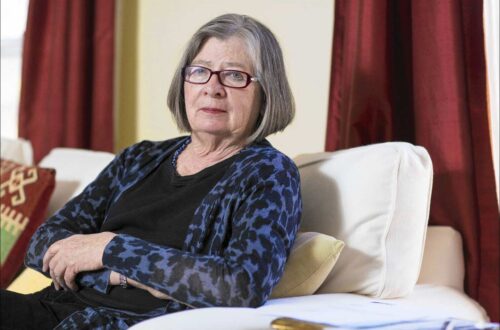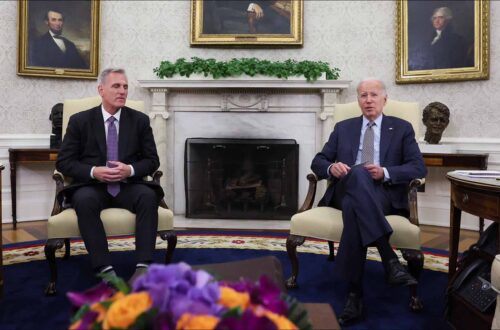Oh, how I have a love/hate relationship with AYSO soccer!
So, gentle reader, you may well ask what does “AYSO” stand for? Officially, it stands for American Youth Soccer Organization, and it has been around forever. I played it back in 1976. But I and other parents refer to it as “All Your Saturdays Occupied.”
So let’s start with why I love AYSO soccer. Firstly and lastly, there is the exercise. I see my daughters come running off the soccer pitch panting and covered with sweat, with cheeks red as tomatoes, and I see health. Our bodies are meant to be used, and exercise in young people is often a barometer for health later and throughout life. It saddens me to see so many kids whose parents lift not one finger to enroll them in youth athletic activities – often because they don’t exercise at all, either. This sets the stage for ill health later.
Secondly, there is the social aspect of youth sports. Young people learn the fundamentals of soccer through AYSO while making friends and competing on Saturday morning matches and weekday evening practices. Getting kids outside and laughing and playing together is so much better than sitting alone looking at pixels dance on a screen at home. AYSO soccer can be an important blow against the social isolation many kids suffer, especially those living in poverty. Sitting at home looking at their phone or watching television hour after hour or playing video games ad nauseam.
Finally, there is the cost. To sign up for an entire season of AYSO soccer is so cheap that all but the poorest families can do it. (I suspect there are programs to cover fees for destitute families.) Now I realize plenty of overwhelmed and/or clueless parents will not avail themselves of AYSO soccer, but money should not be a deterrent. It is accessible; it is inclusive. I look at the hundreds of families and thoughts of players on the soccer fields each autumn weekend, and I wonder why every parent does not have their child out there. Many do, but most parents do not.
But the low price and easy accessibility of AYSO leads to precisely its biggest liabilities as kids get older. One of the big reasons the price of AYSO soccer is so low is because volunteers run it – the parents of the players, almost entirely. The division coordinators, the coaches, the referees, the persons setting up and taking down the fields before and after play – they are all parents, and they are doing it for free. Whenever I might object to the large amounts of my free time I put in as a AYSO coach or referee,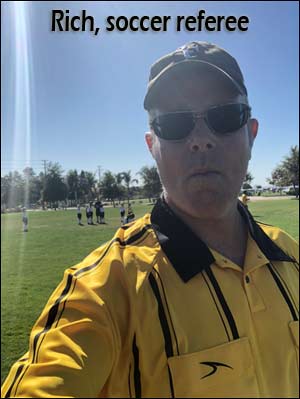 I reminded myself that there were parents serving as division coordinators and doing much more than me. Impressive! And I was not the only one putting in the hours. The problem, though, is this: most of the parents, like me, don’t really know what we are doing.
I reminded myself that there were parents serving as division coordinators and doing much more than me. Impressive! And I was not the only one putting in the hours. The problem, though, is this: most of the parents, like me, don’t really know what we are doing.
We are volunteers and amateurs, not professionals. I don’t do soccer for a living; I am an educator. I know more than the average 12 year old girl about soccer, but not much more. Yet I have been a coach and a referee, but I was making much of it up as I went. But I passed a background check and underwent some cursory training, and I went to work for free coaching my daughter’s team. I looked up soccer drills online via youtube. Almost all the other coaches are similar to me. If parents did not step up, there would be no AYSO soccer. That is impressive, no?
This, in my opinion, works perfectly fine when the kids are six, seven, or eight years old. They are so young they just run around in a big group chasing the soccer ball around. They are too young for all but the most basic coaching. Young kids are playing “bumble bee soccer,” and some kids ignore the soccer and stand apart and pick dandelions off the ground or chase butterflies. They need to mature and grow up some before they can learn to play proper positions, learn to pass, play more as a team, etc. Even as the kids generally make a hash of the soccer, they are learning the basics, even at the earliest ages. And they are getting plenty of exercise. Pretty soon they will not remember not having been part of some sports team or other. Exercise becomes a way of life, a habit. “Give me a child until he is seven and I will give you the man,” sayeth the Jesuits.
But there arrives a time when a young person with talent and ambition needs to jump ship from AYSO and join a “club” soccer team. This young athlete should get a real coach, not a parent faking it. The coach should be a professional, and the parent should pay good money to him/her. In soccer, as in most endeavors, one gets what what one pays for. Yes, parents – time to open up your wallet! Similarly, the assistant and center referees should be experienced and paid, too. And soccer players who lack talent and the desire to work hard as a team should be cut from the team. If they do not contribute meaningfully to the success of the team, they should not be on the team. This is “club” soccer, and it is not meant to be inclusive.
This last part is important, and it sounds awkward to the democratic ears of Americans. Most girls my daughters have played with on AYSO have been nice enough, as were their parents. But many of them seemed to suffer from poor coordination and were slow. I understand the girls were young, but often I would look out on the poor soccer play in front of me and scratch my head in confusion. I would see a girl walking on the soccer field as most everyone else was running, and it seemed obvious this kid did not like to run – a problem in a sport like soccer. One parent explained to me why he did not sign his daughter up for soccer thusly: “She is allergic to grass.” Allergic to sweat seemed more like it!
In my AYSO coach training I was told some 70-75% of children quit youth sports by the age of 14. The blame for this lamentable statistic was laid at the feet of over competitive parents who place too much stress on winning. I am sure this plays a role; I have seen my share of hyperventilating fathers screaming from the sidelines at their seven year olds. (“Let them make a hash of it and play,” I tell them. “You can get competitive when they are older. But not now.”) Nevertheless, I suspect an even bigger factor is that many kids see clearly they have little athletic talent. So they find some other more auspicious activity than sports, like playing the clarinet or trying out for the school play or whatever. Kids aren’t dumb.
As the kids get older in AYSO, it gets harder to hide weaker players on the fields in soccer. Put them back on defense, and then the other team scores at will – and you lose. It is much more fun to win than to lose, and it is much less fun to lose badly; the whole team, with reason, blames the weak links. By 13 or 14 who wants to be the player not holding her own on the soccer pitch? Winning and losing did not matter much at eight years of age, but that changes. The weakest players prune themselves.
I remember this one 8 year old girl on a team I coached – let us call her “Kristina.” She did her best for me and her teammates, and her parents could not have been nicer and more supportive. But she was just no good at soccer. I would watch her from the sidelines incredulously and ask myself, “Exactly what part of her DNA codes for lack of coordination and slow foot speed?!?” I hid her on defense and as a goalkeeper, occasionally as a mid-fielder. But Kristina approached me before the last game of the season and asked, “Coach, can I play offense?” I recognized this was not a winning strategy if we wanted to win, but I said “what the hell” and put her on offense for the first quarter of that last game. The other players ran around her and I don’t think Kristina ever touched the ball once, looking out of sorts. In the second half, she played goalie. That game was tense and hard fought, and the score was tied 1-1 as the second half approached its end. A player from the other team took a kick on goal, but she was so far away from the goal that the ball had hardly any speed by the time it arrived to Kristina.. But somehow she mishandled grabbing the ball with her goalkeeper gloves, and the ball deflected off Kristina’s hands into the goal. Almost immediately afterwards the referee blew the whistle to signal the end of the game, and we had lost the final game of the season. Kristina put her hands over face and started crying. The other girls wanted to kill her. The season was over. I could not believe it.
But I went out on the field and thanked Kristina for playing and trying her best. Even in that low moment of defeat I knew, as coach, that I was the team leader and Kristina was my responsibility. I had an obligation to her as important – if not more so – as to the best player on the team. Then I thanked the other girls on the team for their efforts in the season, and reminded them that sometimes you play your best and still lose. I smiled. I thanked the other parents. Then I immediately left alone and drove straight to my club and swam a mile of laps in the pool, trying to burn off the frustration.
Was Kristina playing soccer the next season? I did not see her. Should she play? AYSO would say, “Yes.” For my part, I don’t know. But a team that wants to win would pause to accept her. It is hard. She was a sweet kid.
And then was a different kid in another season – let us call her “Valerie.” She was a student in the emotionally disturbed program in the local public school. She somehow managed to kick the soccer ball into the head of every kid on the team during practice, a feat I don’t think was accidental. At times the coach spent significant amounts of time away from the rest of the team talking to Valerie, trying to quell an outburst of anger. There were times during the season when Valerie had good moments on the soccer field and contributed to the team, and I recognize that these might be some of the only positive team sports experiences she would ever have. Nevertheless, I would much prefer not to have a “Valerie” on my daughter’s team. She was more trouble than she was worth. I was informed later that Valerie had been kicked out of the emotionally disturbed program at school for misbehavior – quite a feat.
And then the next year one team had a midget. The sight of so small a player on the field was incongruous, and my memory of her was watching bigger, faster girls run around her as she moved this way and that on what looked to be stumps for legs. I was incredulous. The devil’s advocate part of my brain asked, “Do you want to deny midgets their chance to enjoy youth soccer?” No, I don’t. I just don’t want her on my daughter’s team. Not that she might not be a wonderful young lady whose company is well worth sharing. But from what I saw on the field she could not hold her weight in terms of contributing to team success. In soccer she was no good. And there are plenty of non-midget players that are not much better.
In “club soccer,” in contrast to AYSO, they cut from the team kids not good enough and/or who have attitude problems. They do not try to be all things to all people.
In sports, playing with stronger and better athletes makes you stronger and better. Similarly, in school, being around smart kids makes you smarter. The opposite is also true: your peers can pull you down. When I ask my high school students for advice in parenting, they often respond, “Watch your kid’s friends, Mr. Geib! Watch out who they hang out with!” Similarly, I play my worst tennis when playing with not so great players. I seek to try and compete with players a little better than myself. They help pull the level of my game up.
I liked AYSO in the early years. I was amazed that in AYSO so many parent volunteers, from division coordinators on down, put together all these soccer teams for autumnal Saturday mornings. All the coordination involved and persons cooperating all to get these young people moving and sweating while learning the fundamentals of soccer is to be applauded. I can hardly say a negative word about it, at least at the younger levels. This is all to the good.
But as the children get older, if you want the best for your child who shows both athletic talent and an inclination to maximize that talent, then it comes time to exit AYSO and go “club” soccer. It is time to pay for quality coaching with other similar soccer players who want to take it to the next level. Frankly, you owe that to your kid. I fear I moved my oldest daughter too late out of AYSO into competitive club soccer. She might already be too far behind the kids who have been in club for years. I feel like I should apologize. I didn’t know beforehand!
Today, September 15th 2018, we just finished the fifth week of the season, and I am counting the weekends until the playoffs and end of the season are upon us. I refereed two games myself today, and watched two of my daughter’s matches: AYSO = All Your Saturdays Occupied. Tiring! I am actively seeking to maneuver my daughters out of AYSO and into club soccer; running away from it, in fact, I will be thrilled to be “done” with AYSO soccer. I am ready to spend some money on coaching. I look forward to seeing how far my daughters can go. How much they can improve. How much fun they can have. How much success they can achieve. I am ready to let better qualified persons coach and referee her.
But I suspect I will also look back fondly on the AYSO days, remembering the good and forgetting the bad. Nostalgia might paint AYSO in rosy colors heralding the days of innocence – “little kids, little problems; big kids, big problems,” other parents warn me.
But excellence then is a not an act but a habit, as Aristotle reminds us. I don’t care too much about sports by themselves. This soccer business is kids playing with a ball, in the end. But I do care about my daughters learning to reach for excellence – to learn to enjoy exercise, take direction, cooperate with others, overcome adversity, practice good sportsmanship, maximize their potential, and to believe in themselves – these are the directions that given in childhood produce healthy, well adjusted, prepared, and happy adults.
Or so I will hope.
Amen.
